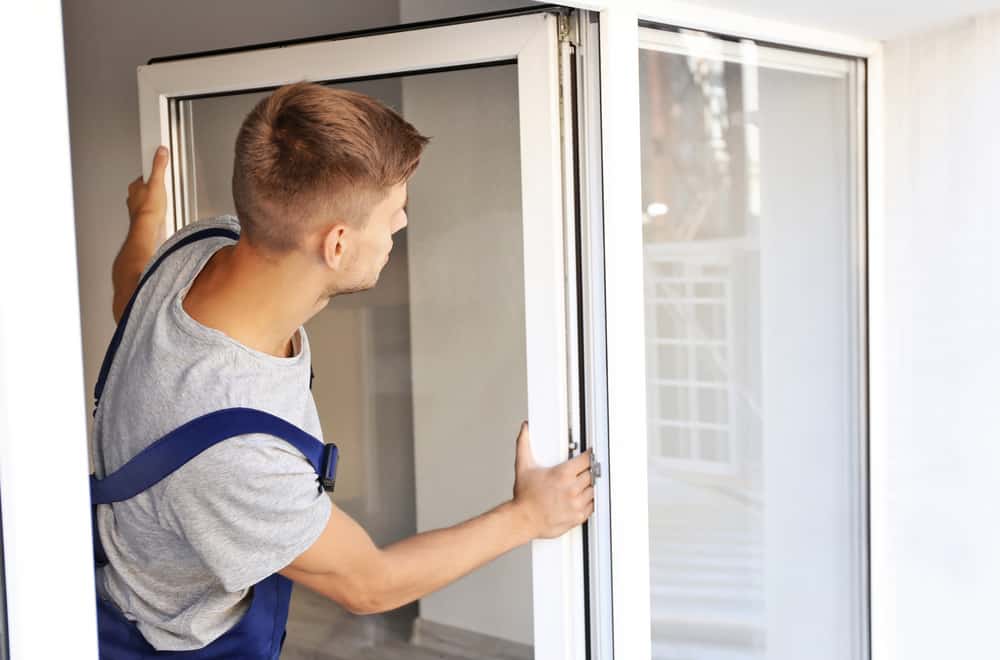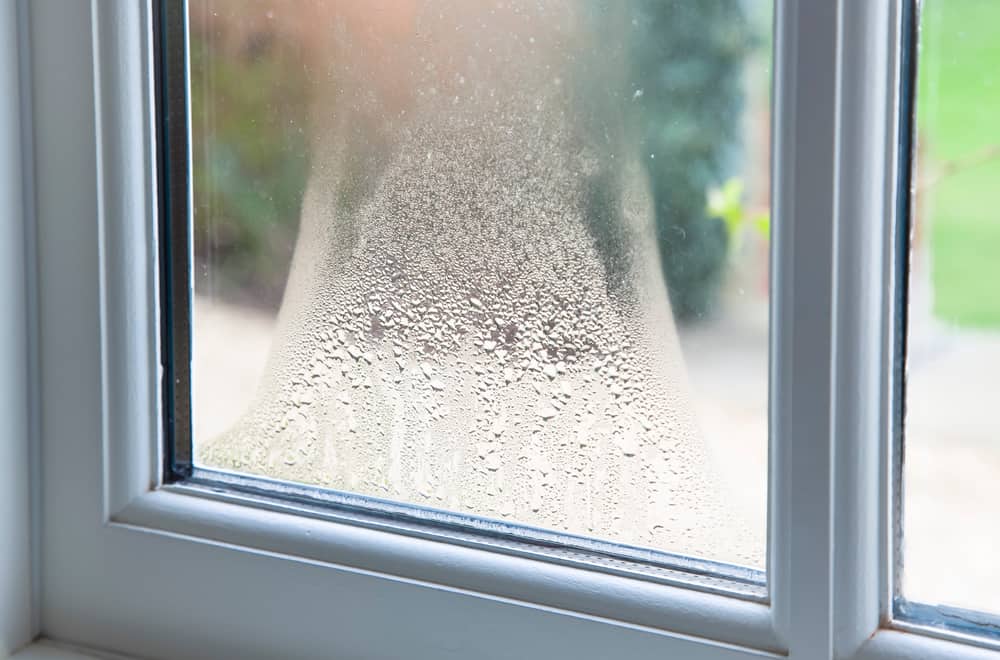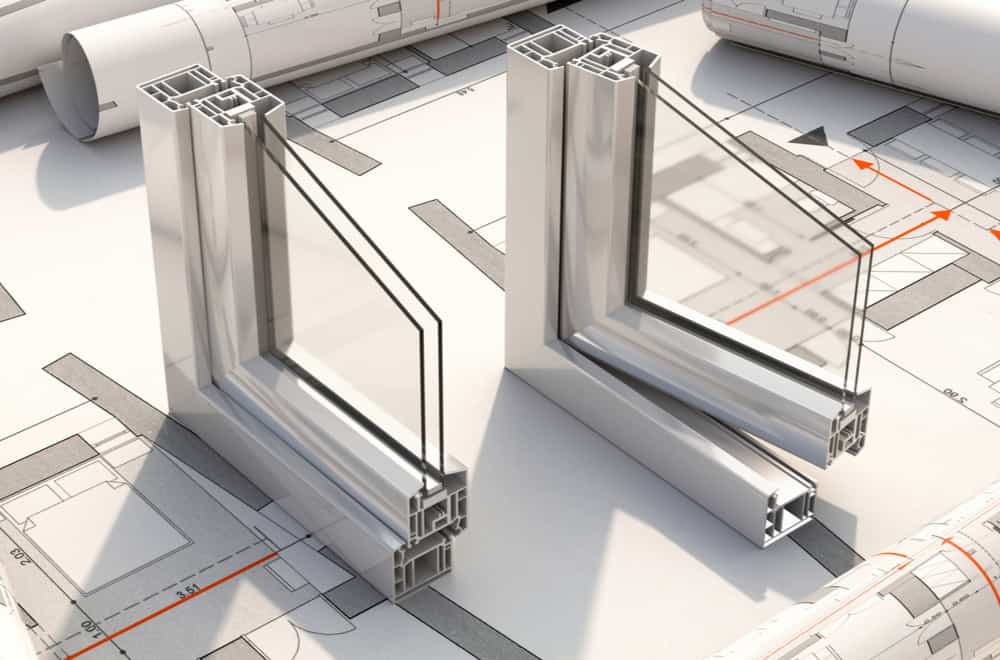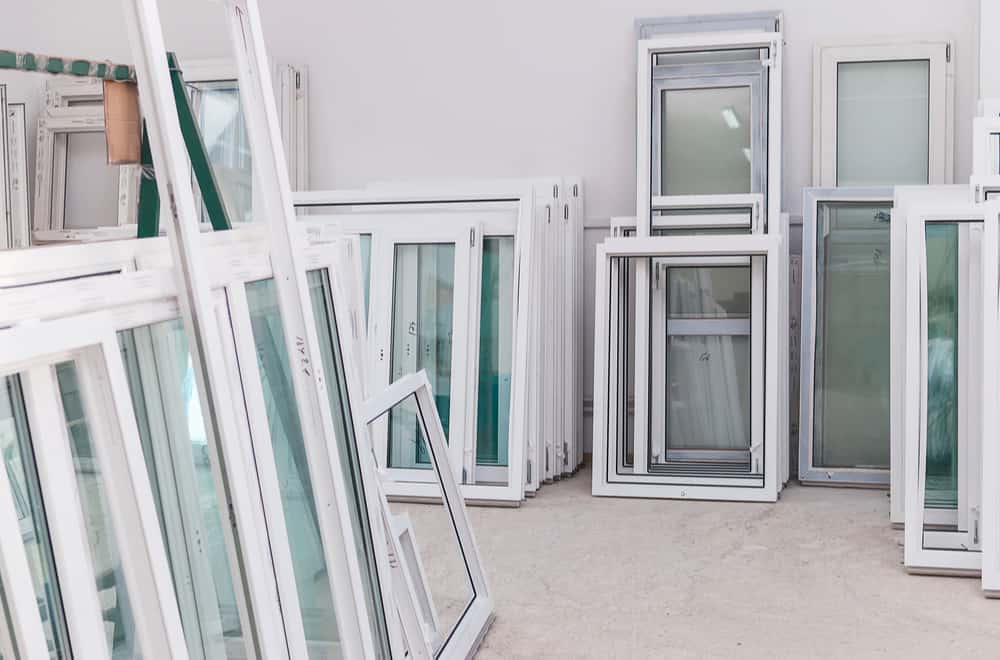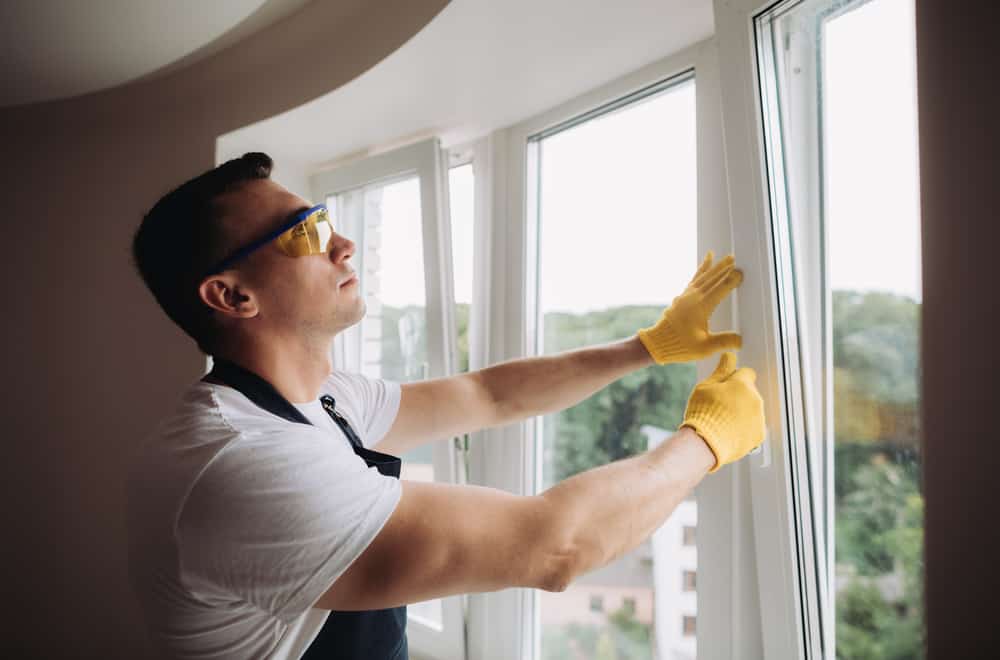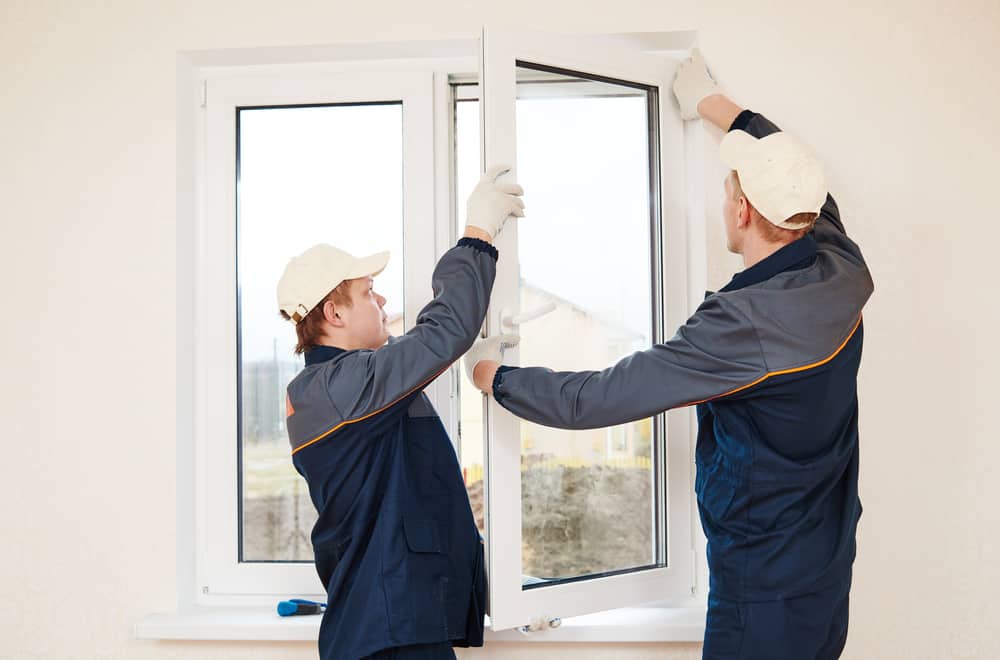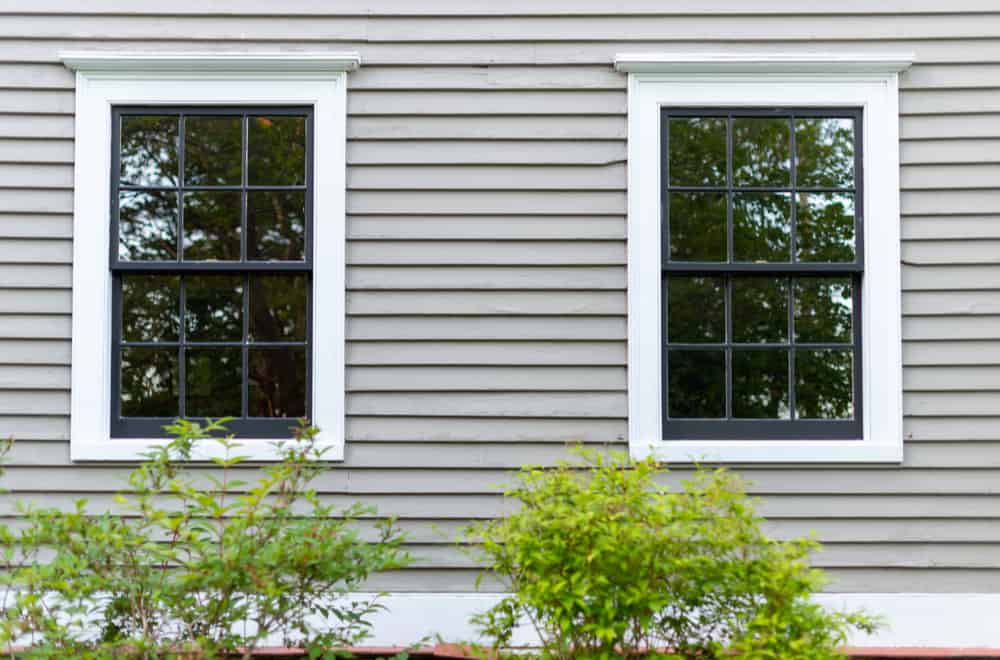While vinyl windows have existed for decades, composite models are a new mixture of wood, vinyl, and metal available on the market since recently. Many people like new kinds of stuff, but you should compare vinyl windows vs. composite before purchasing to determine which style fits your home better.
As always, the crucial characteristic when choosing windows is material. You probably know many facts about vinyl, but this new product is still unknown, and it is necessary to determine its energy efficiency, maintenance level, and affordability. Let’s take a look.
Table of Contents
Vinyl Windows
Vinyl is an old and already proven material for windows introduced in the 1970s. It comes with numerous advantages and downsides that determine its desirability among customers. This material won’t rot and is water-resistant, but it is an artificial option harmful to the environment.
Pros
- You can find them in a few styles and customized colors besides standard white and brown
- Since their frame corners are airtight, these windows are energy efficient and with decent insulation capabilities
- These windows won’t warp, rot, and rust
- It is almost a maintenance-free option
- These windows are inexpensive compared to other options
Cons
- Windows made of this artificial material are not appealing
- Not all vinyl window types are the same quality and can crack fast
- They are not impact-resistant and will fade when exposed to direct sunlight for a long
- Re-painting is almost impossible and never brings an entirely satisfactory result
- Vinyl is not a biodegradable material, making it an eco-unfriendly option
Composite Windows
Composite windows are an excellent mix of wood strength and stability and low maintenance and rot resistance, typical for materials like aluminum and vinyl. Unfortunately, they are still rare and expensive. They are strong, making them an ultimate option for regions known for heavy rains and snow.
Pros
- Most composite window types have excellent insulation properties
- These windows have outstanding thermal properties and are energy efficient, but this feature depends on the design and materials used
- They come in various styles and colors
- The components are recyclable, plus manufacturers often make these windows from recycled materials
- This newest technology requires low maintenance
Cons
- Numerous composite window types require in-depth research to find the desired design
- Composite windows fit modern designs but are unsuitable for traditional homes
- They are heavy and susceptible to damaging
- You can expect different manufacturers to produce products that vary in quality, durability, and reliability
- They are expensive, and lead time is typically long, sometimes up to four months
Vinyl Windows vs. Composite
The first vinyl windows appeared in the 1970s as an affordable alternative to traditional wood-made models. They require low maintenance, and you can install them like a DIY project.
Composite windows are a hybrid combination of different materials, so they are still not entirely standardized. Therefore, you can’t be sure of these products’ quality and desirable features that vary depending on manufacturers and the materials used in production.
These two materials are similar and designed to solve other window options’ downsides. Both are artificial products but have some ultimate features, like:
- Water resistance
- High durability and long lifespan
- Strong construction
Manufacturers still improve both options based on standard window frame technology.
Vinyl vs. Composite windows |
||
| Feature | Vinyl windows | Composite windows |
| Appearance | Not appealing | Beautiful |
| Colors and finishes | Limited; customized options are expensive | Various |
| Durability | 15 to 25 years | 30 to 40 years |
| Customization | Yes | Yes |
| Turnaround | Widely available | You need to wait for delivery for up to four months |
| Insulating properties | Decent | High |
| Energy efficient | Moderate | Yes |
| Eco-friendly | Not | Yes, but it depends on the used material |
| Installation | You can choose between hiring a professional or a DIY project | You need to hire a certified professional |
| DIY project | Yes | No |
| Maintenance | Maintenance free | Depend on the window’s style, design, and used material |
| Re-painting | Not | It is possible |
| Price | $260 to $550 per a fully installed window | $350 to $1,200 per a fully installed window |
| Resale value | 68.6% | Still undefined |
| Warranty | Often 10 years to a lifetime warranty | Limited |
Appearance
Vinyl windows – Vinyl windows are typically white and brown, but you can also order expensive customized models, including wood grain styling. It is challenging to re-paint them, and the result is often unsatisfactory.
Composite windows – Composite windows are elegant and probably remind you of traditional wood windows. You can pick out one of two varieties, uPVC and aluminum-clad timber. However, they are new on the market, and you can expect changes in this field.
Design
Vinyl windows – Vinyl is excellent for building various window designs without paying too much. You can find almost every window style made of this material.
Composite windows – They come in modern designs excellent for contemporary homes. These windows are elegant, customizable, and available in many styles.
Customization
Vinyl windows – Vinyl windows are typically white, but you can find customized models. Unfortunately, you need to pay an additional fee for this satisfaction. Many manufacturers also offer glass and grid options.
Composite windows – Composite windows are made of different materials, making them customizable. You can find them in various styles and shapes.
Durability
Vinyl windows – Vinyl windows are durable and can withstand harsh weather, including heavy rain, hail, snow, and stormy winds. However, they are sensitive to temperature changes, and extreme cold often causes cracking.
Composite windows – Durable composite windows won’t rot, warp, or expand, and they successfully handle heavy rain and snow. Unfortunately, hail and strong winds can dent this material. Since different material combinations can vary in durability, you should be careful with this product.
Colors
Vinyl windows – These windows typically come in white and brown colors, but other options are also available on the market. However, they are still considered custom models and can be costly. One of the most stylish is the wood grain appearance.
Composite windows – You can find composite windows in various colors, depending on the materials used in their production. Most manufacturers offer a standard shade range, including favorite natural and amber finishes.
Energy efficiency
Vinyl windows – Vinyl windows are hollow with modest insulation properties. However, some types come with insulated frames, interlocks, foam insulation, or air barriers, making them energy efficient. A well-constructed and correctly installed vinyl window can be a highly energy-efficiency option.
Composite windows – Composite windows are energy efficient, depending on the materials used for their production. However, it is estimated that they provide at least 200% better insulation than vinyl. After installing these windows, you can reduce your electricity and heating bills by about 40%.
Water-resistance
Vinyl windows – This type is highly water-resistant and can withstand high humidity levels without rotting.
Composite windows – uPVC windows can protect your home during heavy rains and storms and are an excellent option for coastal regions. This material won’t absorb moisture, and it never rots.
Installation
Vinyl windows – Installing vinyl windows is not complicated, but you should be skillful and have the necessary tools. Many homeowners enjoying DIY projects install their windows on their own and save money.
Composite windows – The best option when installing composite windows is to hire certified professionals to finish this demanding job. Only that way can you be sure to achieve their full potential.
Maintenance
Vinyl windows – Vinyl windows are almost maintain-free, and you can only clean them with a mild cleaner and microfiber cloth. This material can fade, but re-painting them can be tricky.
Composite windows – Composite windows are effortless to maintain and require only basic cleaning. However, it will depend on the used material and your chosen style and design. Periodic lubrication is recommended to keep them operating smoothly.
Price
Vinyl windows – They are among the most affordable on the market and cost $260 to $550 per piece. It is the price for a window and labor expenses.
Composite windows – This window type’s price range is $350 to $1,200 per fully installed standard-sized or double-hung window. The final price depends on the window size, shape, material quality, and location.
Resale value
Vinyl windows – Durable vinyl windows will improve your home’s energy efficiency. They come with an investment return of almost 70% (currently 68.6% in the US).
Composite windows – It is hard to determine composite windows’ return on investment because materials used for their productions significantly vary. Plus, there is not enough relevant data since it is new material. Experts estimate that this rate is slightly lower than in vinyl windows.
Warranty
Vinyl windows – For now, manufacturers offer the best warranties for windows made of vinyl. You can find those providing lifetime warranty, depending on material quality.
Composite windows – You can expect a limited warranty for your new composite windows.
Summary
Manufacturers still upgrade composite windows, and most experts believe they are already a better option for residential homes and commercial buildings than vinyl windows.
However, vinyl windows are reliable and affordable, so many owners still stick to this technology. It is on you what type to choose, but it seems that you won’t make a mistake whatever material you prefer.
